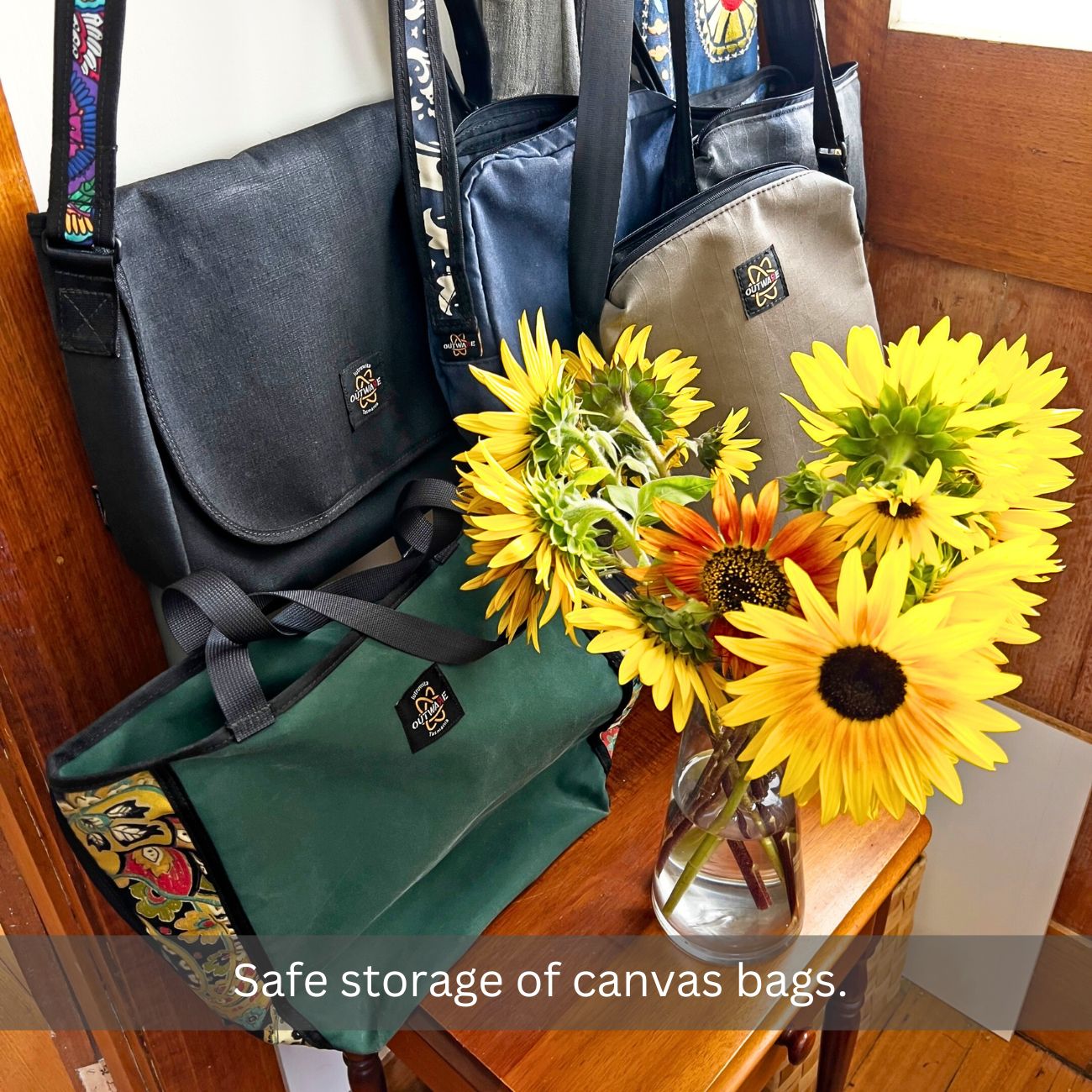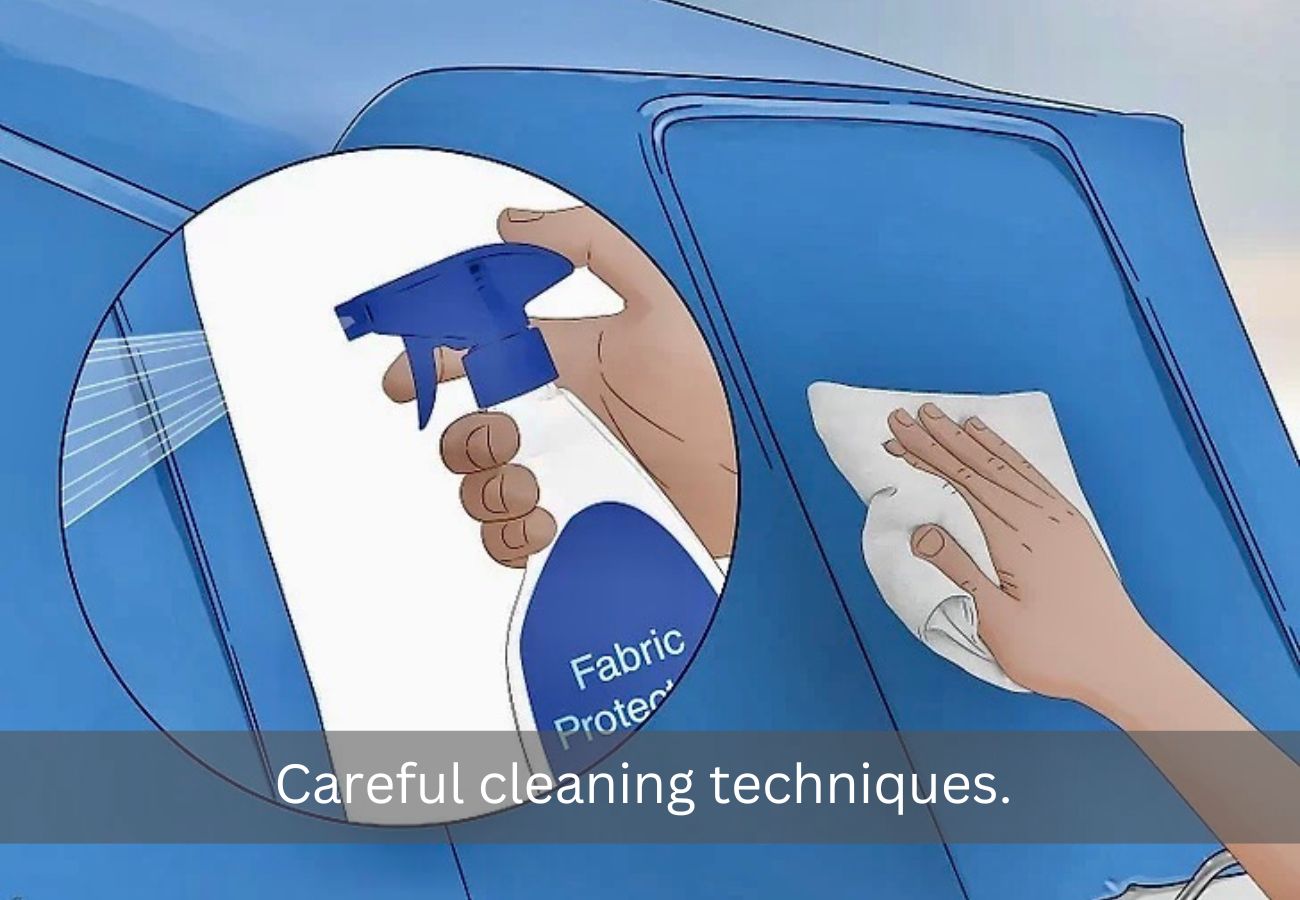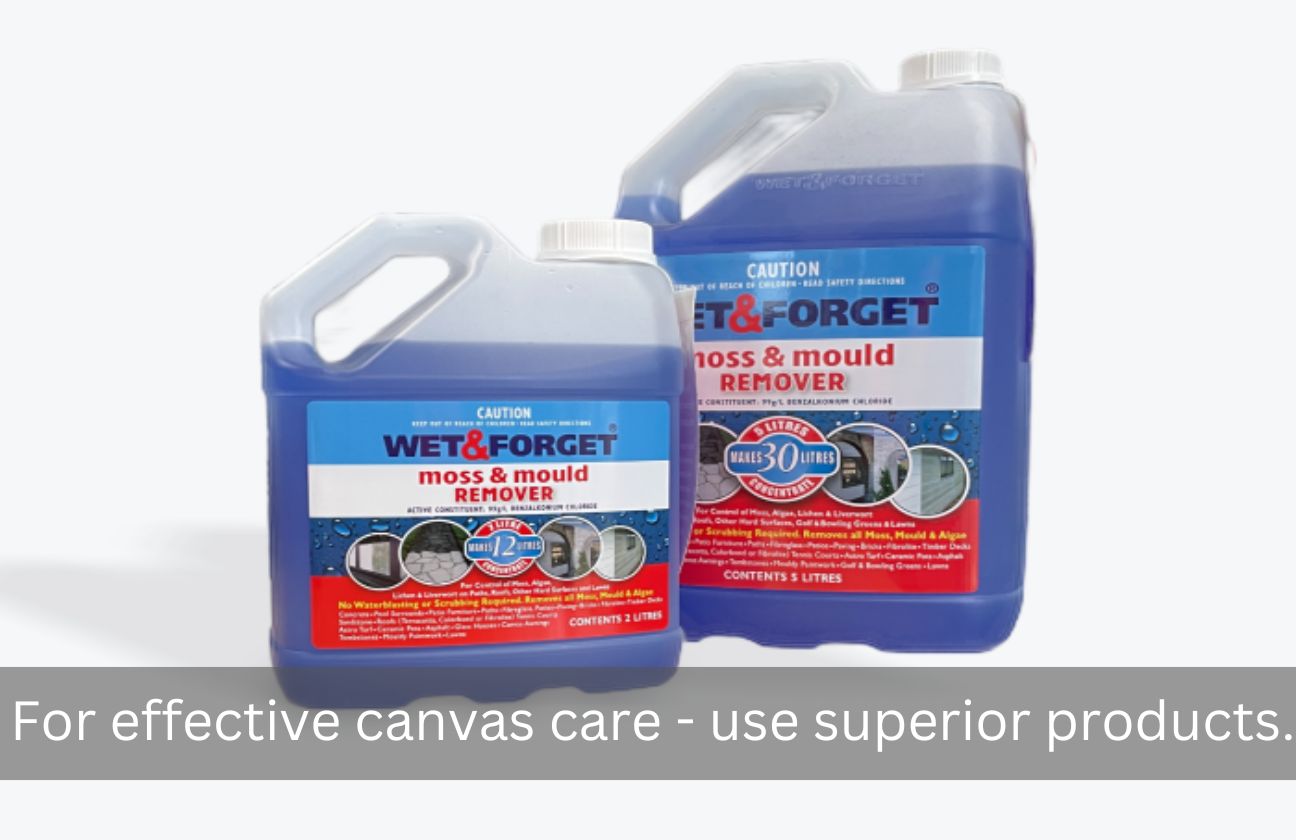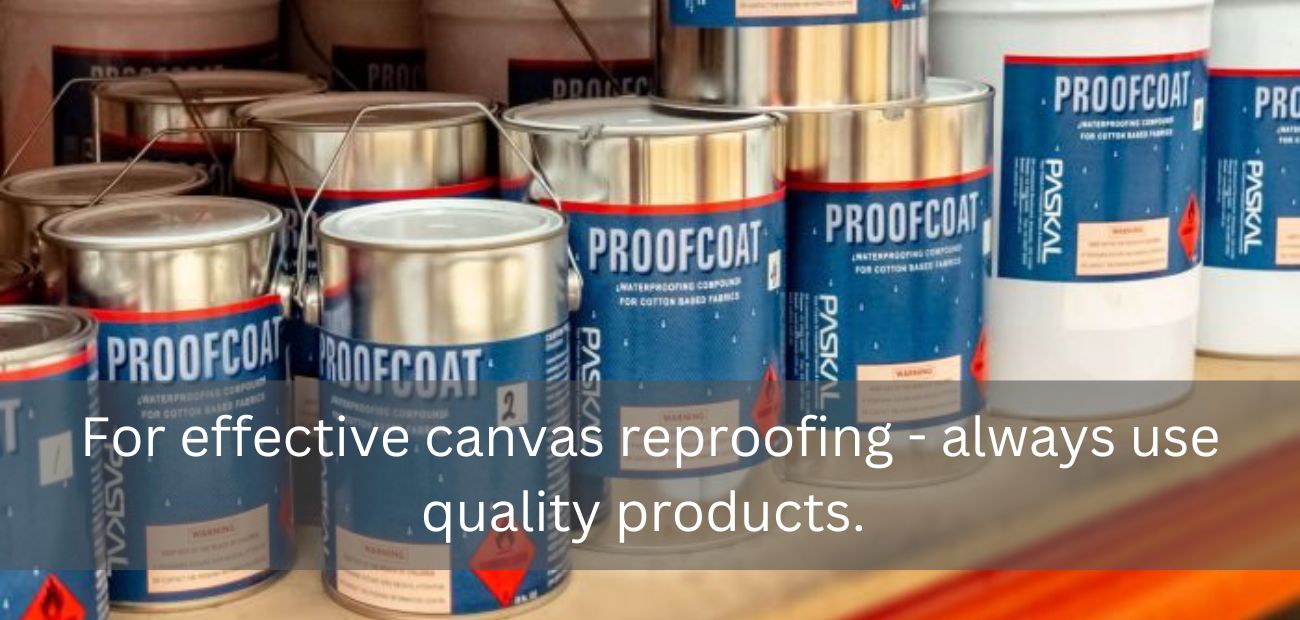No products in the cart.
How to Guides
How to care for & clean canvas: the best guide.
Canvas products are many and varied. Tents, bags, shoes, duffles and packs are often made from modern canvas fabric for its durability, versatility and timeless appeal. Whether you own a beautiful tote bag, a rugged duffle for outdoor adventures, a trusty tent or a reliable backpack, knowing how to care for and clean these stylish canvas products is essential to maintain their quality and extend their lifespan. In this comprehensive guide, we will explore the best practices for caring for and cleaning your canvas items, ensuring that they remain in excellent condition for all your future adventures.
Understanding Canvas:
Before diving into the care and cleaning techniques, it’s important to understand what canvas is and its unique characteristics. Traditional canvas is a tightly woven fabric typically made from cotton, hemp or linen. Modern canvas fabric is made from a blend of both cotton and polyester to get the benefits of both.
The yarn or thread used to weave these fabrics consists of naturally short cotton fibres which have been ‘blended’ together with short lengths of polyester then spun together as a continuous thread or yarn. (Polyester filament is produced in a continuous length which is then chopped into short lengths before the blend process).

It provides good water repellant/proof properties, great wear and strength properties, is treated to resist both UV and mould, and has a long lasting colour dye that is not only a good surface colour but can penetrate the material. As a result, it offers strength, breathability and resistance to wear and tear, making it an ideal material for canvas storage bags, tents, duffles and packs. Its sturdy construction allows these items to withstand heavy loads and frequent use. The Outware range of products are a great example of exceptional bag design using durable, modern canvas fabric.
How to care for & clean canvas:
Some important canvas care tips
• DO ensure it is ‘bone-dry’ before storing (as mould will quickly grow if damp)
• DO remove bird-dropping and dirt before storing
• DO use rodent baits in area where canvas is stored
• DON’T store canvas damp
• DON’T store canvas on concrete
• DON’T use detergents (detergents will wash out the water proofing)
• DON’T use bleaches
• DON’T expose to petrol, oil or chemicals
• DON’T use water under pressure (will force the water proofing compounds out)
• DON’T use warm or hot water (will wash out the water proofing)
• DON’T use medium or hard brushes (will be abrasive on canvas)
Damage is commonly caused by
• moisture (causes mould)
• storing canvas on concrete floors (mould, acidic effect, insect infestation)
• dirt left on canvas (acidic effect)
• UV degradation
• abrasive cleaning
• bird-droppings (acidic effect)
• rats and mice eating the canvas
Proper care plays a vital role in preserving the condition of your canvas products.
Here are some actions to keep in mind:
Regular Maintenance
Wipe away dust and dirt from the surface of your canvas items using a soft brush or a clean, dry cloth. This helps prevent dirt from embedding into the fabric. Avoid scrubbing the fabric as this will remove the dye.
Protect from Moisture
While modern canvas fabrics are naturally water-resistant, they can still be susceptible to moisture damage. Apply a high quality fabric protectant spray to add an extra layer of water repellency.
Weight Distribution
Avoid overloading your canvas bags, duffles, and packs beyond their recommended weight capacity. Excessive weight can strain the fabric and seams, leading to sagging and damage over time.
Storage Practices
When not in use, store your canvas products in a cool, dry place away from direct sunlight. Avoid folding them excessively to prevent creasing and wear lines. If they are expensive or important items, then consider stuffing them with acid-free tissue paper to help retain their shape.

Cleaning Techniques – how to clean canvas:
Cleaning your canvas product requires a gentle approach and appropriate techniques to avoid causing damage. Follow these step-by-step guidelines:
Spot Cleaning
For small stains or spills, promptly dab the affected area with a clean cloth or sponge soaked in clean water. Avoid rubbing, as it can push the stain deeper into the fabric and can create a “scrub mark” by removing the dye. If necessary, use a mild pure soap or a specialized canvas cleaner. Rinse thoroughly and allow the area to shade air dry.
Hand Washing
For larger canvas items, such as duffles or packs, handwashing is often the safest method. Fill a basin with lukewarm water and add a small amount of mild pure soap. Gently wash the surface using a soft brush or sponge. Pay extra attention to heavily soiled areas. Rinse thoroughly to remove all soap residue.
Machine Washing
Some canvas bags may be machine washable; it is essential to check the care label for specific instructions. Place the bag inside a laundry bag or pillowcase to protect it from excessive agitation. If in doubt, use a gentle cycle with cold water and a mild pure soap. After washing, air dry the bag to prevent shrinkage or heat-related damage. Do note – that machine washing “breaks the grain” and will result in a softened canvas product, this can be a desirable effect but the product will lose some of its stiffness. Think stone washed jeans!
Drying
After cleaning, allow your canvas bags, duffles, and packs to air dry naturally. Avoid using a dryer or exposing them to direct sunlight, as excessive heat can cause shrinkage and fading.
Dealing with Stubborn Stains and Mildew:
Occasionally, stubborn stains or mildew may persist despite regular cleaning. Here’s how to tackle them:
Stubborn Stains
For oil-based stains like ink or grease, use a specialized stain remover designed for your fabric. Follow the instructions carefully and test the product on a small, inconspicuous area first. For tough stains, it’s best to consult a professional cleaner.

Mildew, Mould and Moss
Mildew and mould are both types of fungi, the difference is that mildew sits on top of the surface while mould penetrates into the material. If you encounter mildew on your canvas bags, duffles, or packs, create a solution by mixing equal parts water and white vinegar. Dab the affected area with the solution using a clean cloth or sponge. Allow it to sit for a few minutes, then rinse thoroughly. Repeat if necessary and ensure the canvas is completely dry before storing it.

If you have mould on your canvas, this means that the fungi has penetrated into the material and is more difficult to remove. In this case, you need to use a stronger product to solve the issue. Here’s an example of a very effective moss & mould remover designed for canvas. It removes outdoor moss, mould, lichen and algae, killing problem spores and helps stop premature regrowth of unwanted biological matter.

Refreshing and Restoring:
Exposure to the elements and excessive cleaning may affect the waterproofness and appearance of the canvas. This will be evident by wet patches on the canvas remaining after rain, the underside of the canvas getting wet and a general dry/dusty feel of the canvas.
Occasional rejuvenation of your canvas is recommended. Additional proofing may help re-invigorate the canvas. Only use one type of proofing agent on your canvas. You can buy good quality canvas water proofer from the larger camping stores in 2 and 4 litre cans. This should be a very thin consistency such that when applied it will soak right into the material. Before reproofing, remove dirt as much as possible otherwise the reproofing treatment will ‘seal’ in any remaining dirt. Also treat and kill any mould before reproofing. Paskal makes an excellent reproofing product.

For smaller products like bags, fluoro-chemicals such as Scotchgard may be used, but note this is not a reproofing product suitable for large canvas items like tents, tarps etc. It provides stain, water resistance and UV protection, however its effectiveness will also diminish with use and more applications will be required.
Over time, canvas bags, duffles, and packs may lose their freshness or become stiff. Here are some tips to refresh and restore them:
Odor Removal
To eliminate unpleasant odors, sprinkle baking soda liberally over the surface of your canvas items. Let it sit overnight, then brush off or vacuum the baking soda the next day.
Restoring Flexibility
If your canvas bag, duffle, or pack has become stiff, apply a small amount of fabric conditioner or a mixture of equal parts water and glycerin. Gently massage the solution into the fabric, then let it air dry. This helps restore flexibility and softness. Do this sparingly!
And Finally:
Proper care and cleaning are essential to maintain the quality and longevity of canvas storage bags, duffles, tents, fashion items and packs. By following the preventative care tips, utilising appropriate cleaning techniques and addressing stubborn stains and mildew/mould promptly, you can ensure that your canvas items remain in excellent condition for all your travel, outdoor or everyday needs.
With the right care, your canvas products will continue to accompany you on your adventures for a long time – you might even hand some down to the next generation.
SHARE THIS ARTICLE

